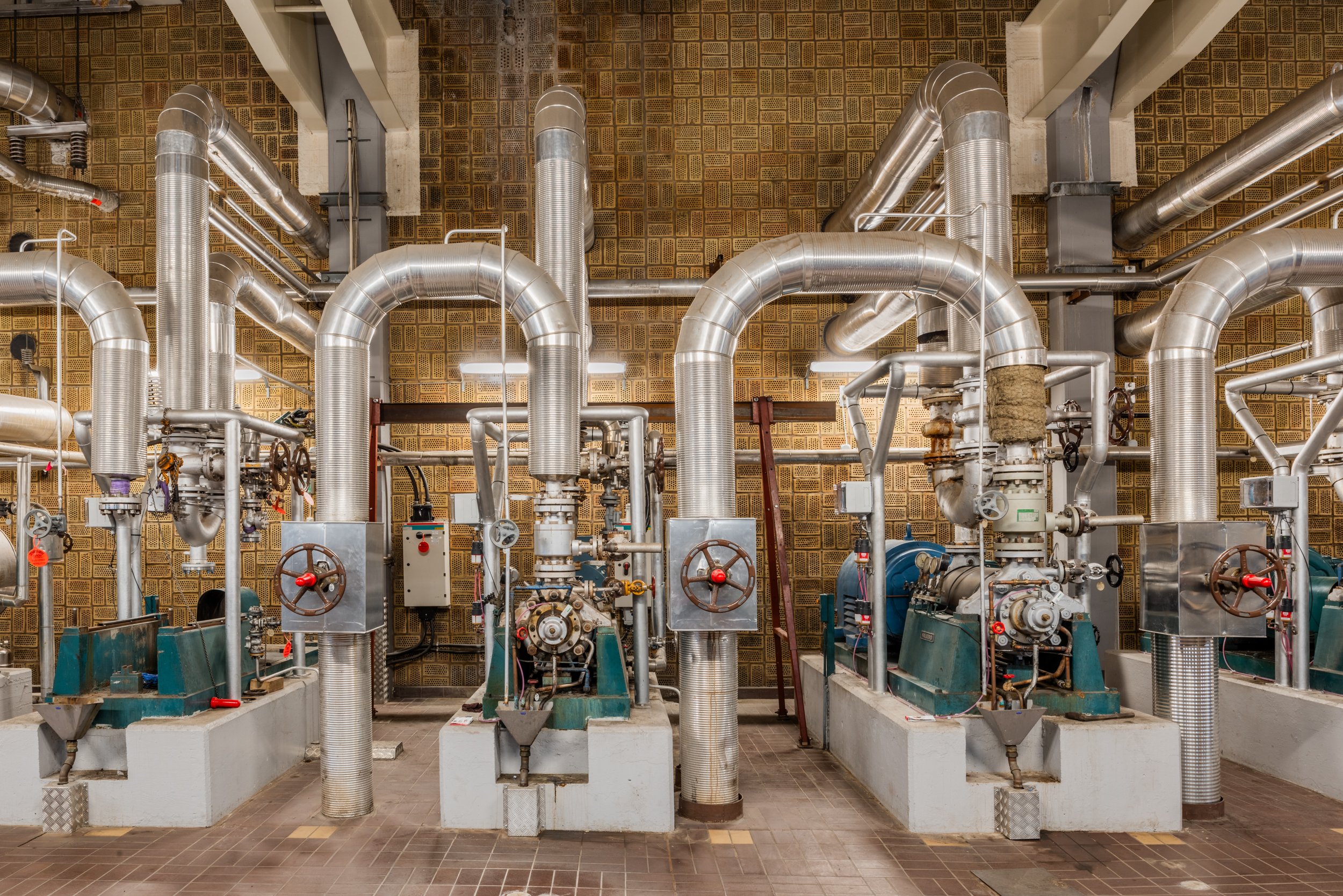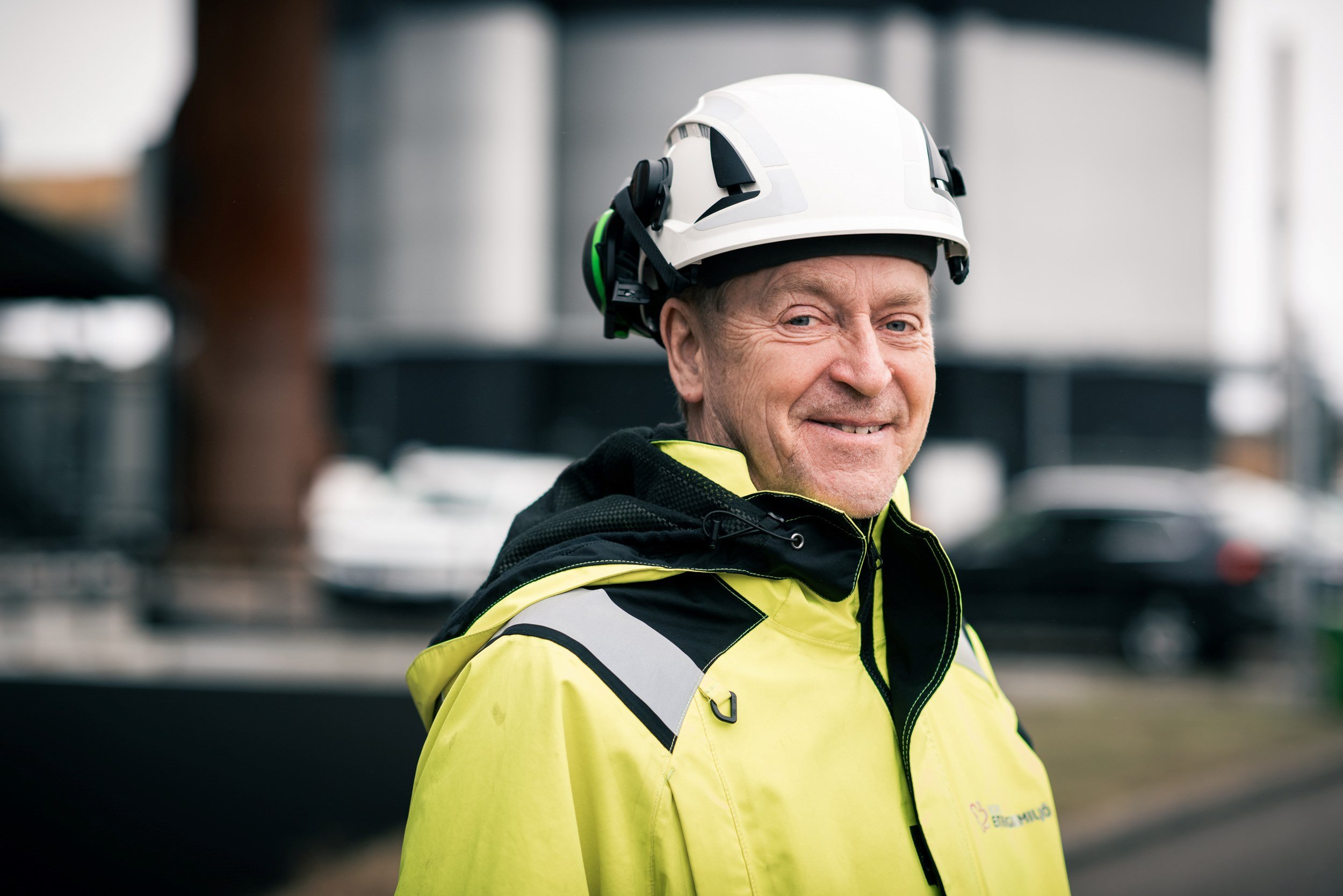Borås Energi and Miljö AB is a company that provides waste and recycling, district heating, and water and sewage treatment services to around 115,000 people in and around the city of Borås, which is 62 km east of Gothenburg in the south of Sweden. The company provides energy and heating from recycling waste and from biogas recovered from treating wastewater sludge.
The company has a powerplant with a lit area of approximately, 10,800 sqm, equipped with four boilers: two for converting waste and two for converting bio-waste. Until recently, the plant was lit by fluorescent lighting. Although the company generates energy from circular sources, it wanted to reduce its use of electricity so that it could provide more to its customers. In addition, it wanted to comply with EU environmental directives that phase out fluorescent lighting across Europe.2

After exploring options with various vendors, Borås Energi and Miljö AB decided on a Glamox connected LED lighting solution. It is replacing its T8 fluorescent luminaires with around 800 Glamox i40 linear luminaires. In addition, in warm areas above the boilers are five linear Glamox Mil G2 linear luminaires, and suspended in the 25 metre-high ceiling are five Glamox Cyberia Hi-Bay lights. These were selected as they can withstand temperature variations from -40°C to 50°C. The luminaires are equipped with PIR presence sensors and connected using a Glamox Wireless Radio system which is managed by a tablet. The wireless light management system also allows Borås Energi and Miljö AB to monitor the status of the luminaires and the amount of electricity consumed.
Anticipated electricity savings of 90% and maintenance bill cut by 80%
“We have gone from having our luminaires on all the time to having light provided only when and where it’s needed. The wireless control system was simple to configure and easy to use. We are still optimising our lighting regime. For example, in some areas, we have optimised our lights so that on average they are on for only 5 or 10 minutes a day. Once complete, we anticipate an overall electricity saving for lighting of around 90%,” said Ronny Sidenvik, Energy Engineer at Borås Energi and Miljö AB.

“The longer life of the LED luminaires has also resulted in less maintenance. Previously we’d bring in contractors to do maintenance which would cost around SEK 500,000 a year. We estimate the cost this year will be less than SEK 100,000,” added Sidenvik.
“It’s rewarding working closely with a customer that is committed to bringing the circular economy to life. We estimate that through our connected lighting, Borås Energi and Miljö AB will save the amount of electricity consumed annually by around 130 homes, taking into account that in Borås many homes use heat from other sources,” said Knut Rusten, Chief Sales and Commercial Officer for Glamox’s Professional Building Solutions division.
The installation of the lighting has been fitted around the operation of the plant. It began in the summer last year and was completed in April.
1. According to the SCB Statistic Central Office of Sweden, the average home in Sweden consumes 20,000 kWh per year. In Borås most homes have hot water and heat provided by District Heating. This reduces the electricity consumption by local homes to 5,000-6,000 kWh/year.
2. The EU Restriction of Hazardous Substance (RoHS) directive aims to prevent the risks posed to human health and the environment through electronic and electrical waste, by eliminating products containing potentially hazardous materials, such as mercury in fluorescent lighting. From 25 August 2023, the most popular linear (T5 and T8 tubes) fluorescent tubes were phased out. Sales from stock are permitted until they run out, hence the need to switch to LED lighting.
,(0.5,0.5,1,1)&format=jpg)